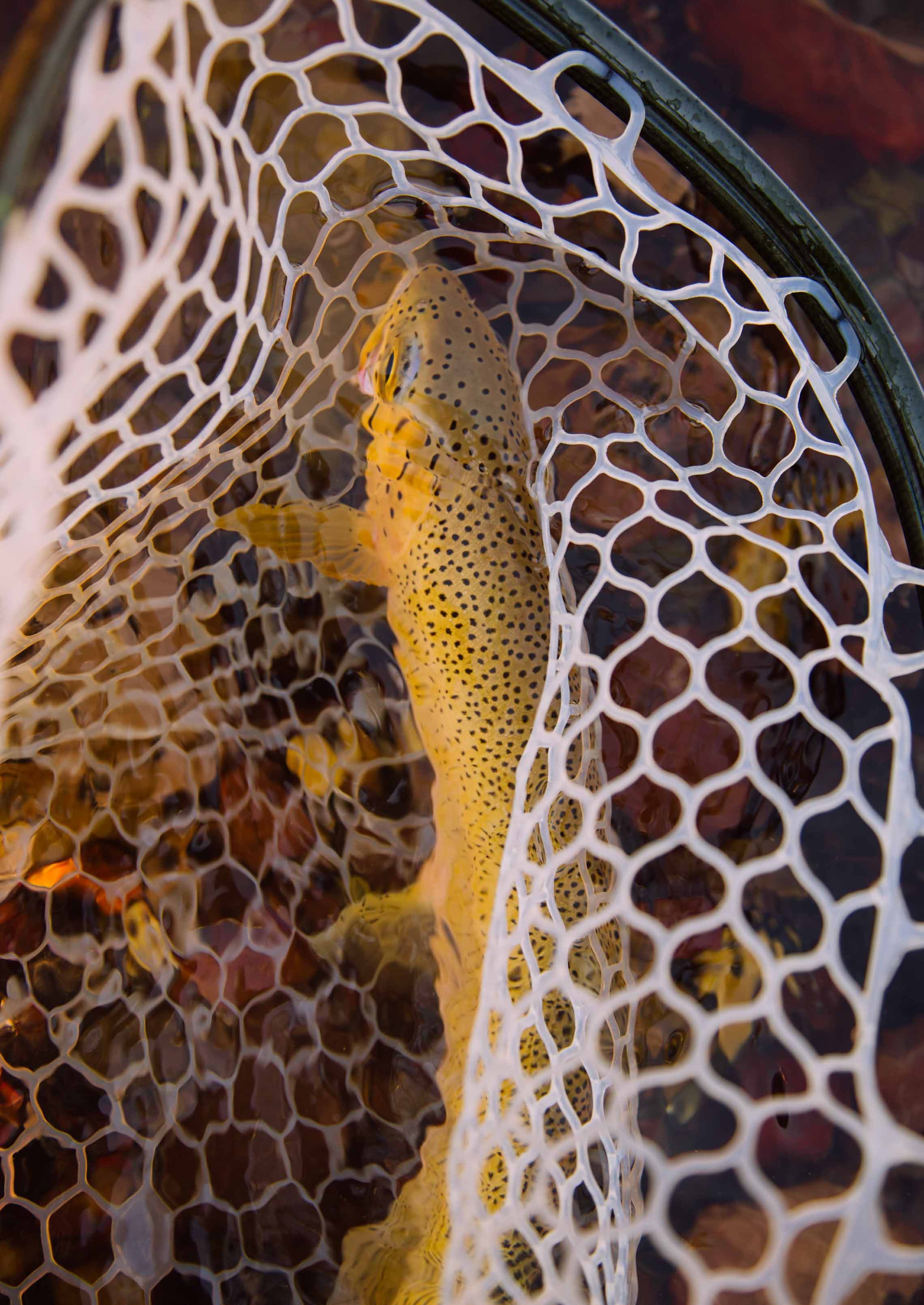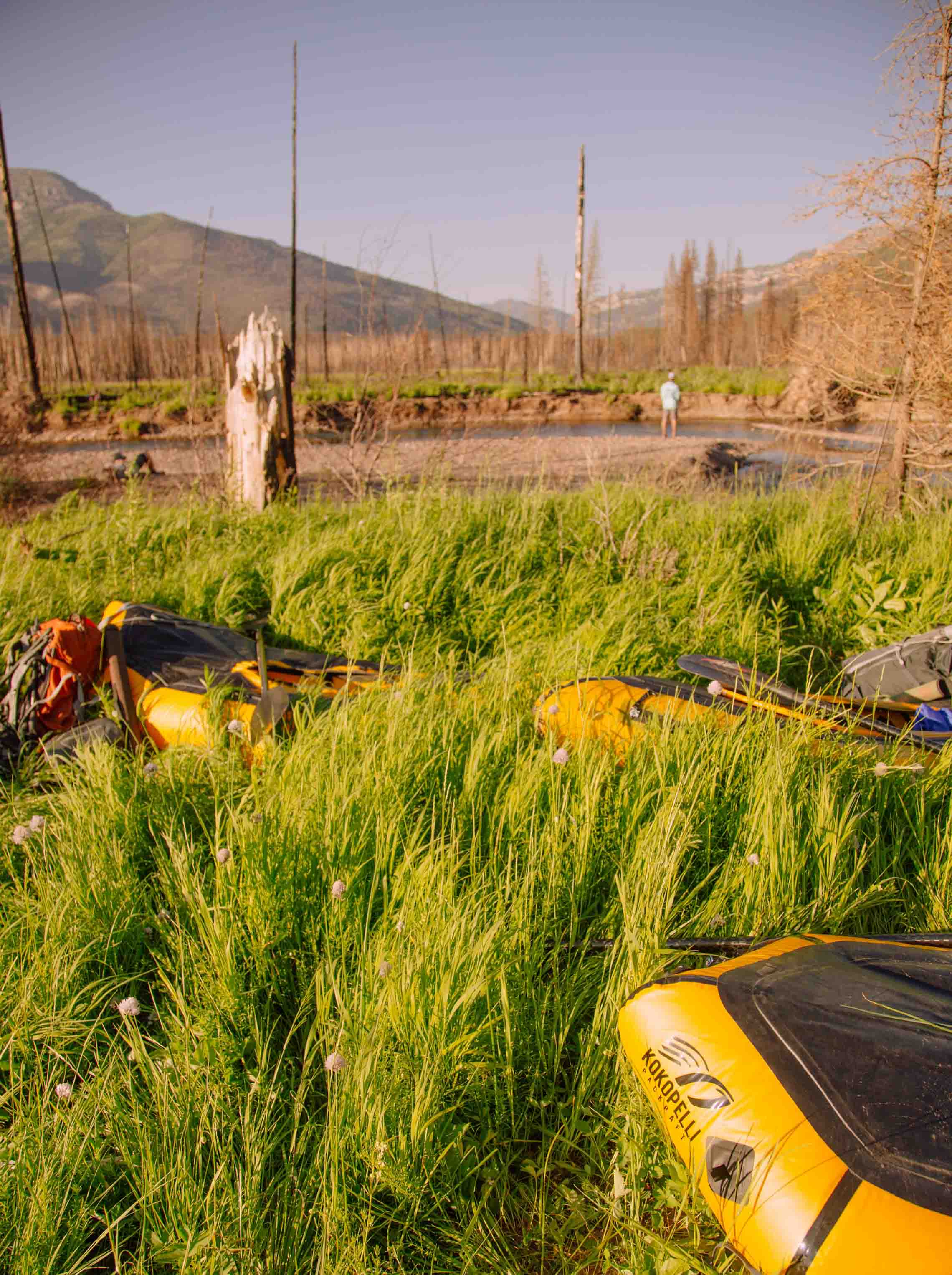Preparing for 9 days in the Bob Marshall Wilderness is no simple feat. From dehydrated meal prep to sleeping quarters, it takes a creative approach to maximize 2.1 cubic feet for a 9-day journey.
There were serious life choices to be made, like contemplating between additional space for food or sacrificing that space for another fly box. For those of you wondering, I took my fly box. I wasn’t going to trek into the middle of blue ribbon water only to kick back and relax, I was going there to charge the rivers by raft and explore the banks by foot with a fly rod in hand. The journey began at the trailhead of Young’s Pass where mellow rolling hills met a series of switchbacks. A seemingly shaded start was short-lived as a looming sunrise along the Eastern ridge made its debut. Although hitting the trail early was a great attempt to beat the heat, it was was ultimately short-lived.

As the sun broke the ridgeline and the heat kicked in it was all mental. A 70-pound pack coupled with vulnerable feet led to immediate blisters, but those are simply commonplace on the trail ‚Äì you just deal with it. At 5 miles, we reached the top of Young’s Pass only to descend into a recent burn complex where shade was obsolete. Formerly thriving hillsides had been charred to a crisp leaving lodge poles and unobstructed views of the valley floors. It was unbelievable. Everything that was once abundant had simply been replaced with fresh vegetation initiating a new era of growth.
After 14 miles traversing valleys tucked into the wilderness we arrived at Young’s Creek where we put our feet to rest and hit the water for an afternoon float. We didn’t float more than 3 miles before setting up camp at our first of six log jams. In total, we covered 16 miles on day 1, but we weren’t done yet. It was time to unpack the fly rods, hike the banks and wade the crystal-clear mountain runoff. Although a relatively narrow channel, Young’s Creek holds some incredible fishing opportunities with massive cutthroat trout hugging the banks and holding in deep pools. It was the perfect way to unwind and disconnect to the sounds of the pure wild with a fly rod in hand.

Day 2 was a different story. All of us woke up only to realize our body’s simply do not recover like they did when we were teenagers. Our body’s just hurt a lot. Fortunately for us, we were done with the backpacking portion and were set for our first 10 miles of our 50-mile float. The timing couldn’t have been better with flows that provided just inches of clearance over rock beds and enough current to keep us from dredging our boats across the river floor. Our float, aside from the 6 portaged log jams, couldn’t have been better.
Sunshine, blue sky and mountains towering over us from every side. It’s quite the perspective and an incredibly calming float. As we neared the confluence of the South Fork of the Flathead we entered some technical areas where navigating quick shoots and exposed boulders got the heart rate back up to par. It was a dynamic shift in mentality as we had previously been floating passively. All in all, we navigated through without any issue. Well, almost no issue. It was a seamless approach until we heard that unforgettable SNAP and a handful of four-letter words to accompany Peter’s broken paddle.



Peter quickly evolved from packraft paddle to canoeing through the remaining canyon shoots. A couple of miles later we found camp and Peter got quick to work. One knife, a couple of sticks, and some serious ingenuity resulted in a functional paddle that somehow survived the trip.
With a broken paddle out of the way, it was apparent that we were likely to encounter similar scenarios where creativity was a necessity.


Relentless sunshine and massive complex fires from years past left us fully exposed to the sunlight, so hunting for campsites with even the slightest tree cover was a serious consideration. Although most fires burned through Young’s Creek, there were blazes that took out much of the hillsides running through the valleys of the Southfork where crowning jumped from tree to tree, leaving only toothpicks behind.
As the river miles added up, we encountered choice campsites where tree cover became commonplace. Along the riverbanks, we were lucky enough to find a shaded area where we would set up camp with a side of dehydrated meals, clif bars and trail mix to refuel. As the week progressed we discovered that there was no such thing as a bad day in the Bob Marshall Wilderness. This place holds so much beauty and calms the mind like no other place I have ever experienced.


A wilderness that could have followed a path opposite conservation with home and condo development, interstates and immediate access to untamed wilderness, has remained as it was intended to be. It’s no surprise that Bob Marshall dedicated a life to the preservation and conscious efforts to maintain that these roadless havens remain wild.
There are not many places left like this which further illustrates the importance of maintaining that those of us who visit this sacred place are mindful of our footprint. Just as those who emphasized the social and environmental need to conserve, we too hold the responsibility to maintain parallel ideals.